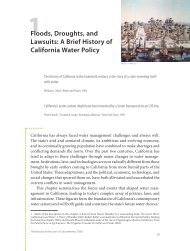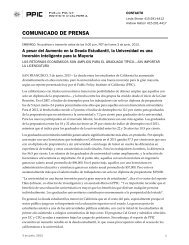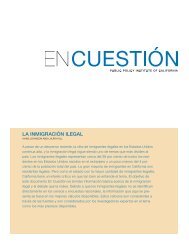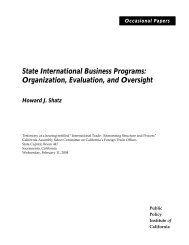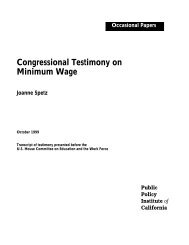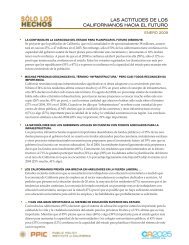Transportation Spending by Low-Income California Households ...
Transportation Spending by Low-Income California Households ...
Transportation Spending by Low-Income California Households ...
Create successful ePaper yourself
Turn your PDF publications into a flip-book with our unique Google optimized e-Paper software.
households with and without children (5 percentage points). Above, we<br />
mentioned that the transportation expenditures of higher-income<br />
households appear to be less sensitive than the transportation<br />
expenditures of low-income households to the presence of children; here<br />
we see that the same is true of vehicle use rates as well.<br />
Using PUMS data, we found that differences in vehicle ownership<br />
rates between low-income households with and without children<br />
persisted even after we controlled for the age of the householder. We<br />
also found that car ownership rates differed very little <strong>by</strong> the age of the<br />
head of householder within each income subgroup. Car ownership rates<br />
for low-income households with children differed <strong>by</strong> a maximum of 3<br />
percentage points between the age categories, and similar results were<br />
obtained for the low-income households without children. 11 We also<br />
looked for differences in expenditures based on the number and age of<br />
the children in the household but did not find any strong patterns<br />
related to these factors. Somewhat surprisingly, we found that the<br />
number of children did not have any statistically measurable effect on<br />
transportation expenditures. The age of the children had no effect<br />
either, except for households with children over age 18, which had<br />
somewhat higher expenditures.<br />
<strong>Transportation</strong> expenditure data from the Consumer Expenditure<br />
Survey do not permit us to isolate work-related expenditures from<br />
nonwork-related expenditures, but we find some evidence that<br />
expenditures are higher for employed households. One might expect to<br />
see higher transportation expenditures when there are more employed<br />
adults in a household because most employed adults commute and<br />
unemployed adults do not, although this difference may be offset <strong>by</strong> job<br />
search trips <strong>by</strong> the unemployed. <strong>Households</strong> with fewer employed adults<br />
may also make fewer trips simply because their income is lower and they<br />
have less to spend on transportation.<br />
The dollar amount of transportation expenditures is much lower for<br />
households with no earners than for households with any earners (Table<br />
3.9). However, the number of employed adults in households with<br />
earners does not seem to have much further effect on the dollar amount<br />
_____________<br />
11 See the bottom of Table 5.13 for details.<br />
30



